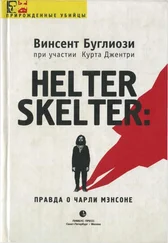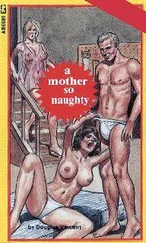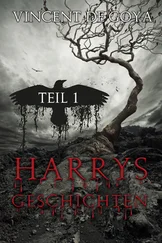In the interim, LAPD discovered the identity of the youth through a print and license check. Shortly after the Parents returned home, an El Monte policeman appeared at the door and handed Wilfred Parent a card with a number on it and told him to call it. He left without saying anything else.
Parent dialed the number.
“County Coroner’s Office,” a man answered.
Confused, Parent identified himself and explained about the policeman and the card.
The call was transferred to a deputy coroner, who told him, “Your son has apparently been involved in a shooting.”
“Is he dead?” Parent asked, stunned. His wife, hearing the question, became hysterical.
“We have a body down here,” the deputy coroner replied, “and we believe it’s your son.” He then went on to describe physical characteristics. They matched.
Parent hung up the phone and began sobbing. Later, understandably bitter, he’d remark, “All I can say is that it was a hell of a way to tell somebody that their boy was dead.”
About this same time, Father Byrne viewed the body and made the identification. John Doe 85 became Steven Earl Parent, an eighteen-year-old hi-fi enthusiast from El Monte.
It was 5 A.M. before the Parents went to bed. “The wife and I finally just put the kids in bed with us and the five of us just held on to each other and cried until we went to sleep.”
About nine that same Saturday night, August 9, 1969, Leno and Rosemary LaBianca and Suzanne Struthers, Rosemary’s twenty-one-year-old daughter by a previous marriage, left Lake Isabella for the long drive back to Los Angeles. The lake, a popular resort area, was some 150 miles from L.A.
Suzanne’s brother, Frank Struthers, Jr., fifteen, had been vacationing at the lake with a friend, Jim Saffie, whose family had a cabin there. Rosemary and Leno had driven up the previous Tuesday, to leave their speedboat for the boys to use, then returned Saturday morning to pick up Frank and the boat. However, the boys were having such a good time the LaBiancas agreed to let Frank stay over another day, and they were returning now, without him, driving their 1968 green Thunderbird, towing the speedboat on a trailer behind.
Leno, the president of a chain of Los Angeles supermarkets, was forty-four, Italian, and, at 220 pounds, somewhat overweight. Rosemary, a trim, attractive brunette of thirty-eight, was a former carhop who, after a series of waitress jobs and a bad marriage, had opened her own dress shop, the Boutique Carriage, on North Figueroa in Los Angeles, and made a big success of it. She and Leno had been married since 1959.
Because of the boat, they couldn’t drive at the speed Leno preferred, and fell behind most of the Saturday night freeway traffic that was speeding toward Los Angeles and environs. Like many others that night, they had the radio on and heard the news of the Tate murders. According to Suzanne, it seemed particularly to disturb Rosemary, who, a few weeks earlier, had told a close friend, “Someone is coming in our house while we’re away. Things have been gone through and the dogs are outside the house when they should be inside.”
About 1 A.M. the LaBiancas dropped Suzanne off at her apartment on Greenwood Place, in the Los Feliz district of Los Angeles. Leno and Rosemary lived in the same neighborhood, at 3301 Waverly Drive, not far from Griffith Park.
The LaBiancas did not immediately return home but first drove to the corner of Hillhurst and Franklin.
John Fokianos, who had a newsstand on that corner, recognized the green Thunderbird-plus-boat as it pulled into the Standard station across the street, and while it was making a U-turn that would bring it alongside his stand, he reached for a copy of the Los Angeles Herald Examiner, Sunday edition, and a racing form. Leno was a regular customer.
To Fokianos, the LaBiancas seemed tired from their long trip. Business was slow, and they chatted for a few minutes, “about Tate, the event of the day. That was the big news.” Fokianos would recall that Mrs. LaBianca seemed very shaken by the deaths. He had some extra news fillers for the Sunday Los Angeles Times, which featured the murders, and he gave them one without charge.
He watched as they drove away. He did not notice the exact time, except that it was sometime between 1 and 2 A.M., probably closer to the latter, as not long after they left the bars closed and there was a flurry of business.
As far as is known, John Fokianos was the last person—excluding their killer(s)—to see Rosemary and Leno LaBianca alive.
At noon on Sunday the hall outside the autopsy room on the first floor of the Hall of Justice was packed with reporters and TV cameramen, all awaiting the coroner’s announcement.
They would have a long wait. Although the autopsies had begun at 9:50 A.M., and a number of deputy coroners had been pressed into service, it would be 3 P.M. before the last autopsy was completed.
Dr. R. C. Henry conducted the Folger and Sebring autopsies, Dr. Gaston Herrera those of Frykowski and Parent. Dr. Noguchi supervised and directed all four; in addition, he personally conducted the other autopsy, which began at 11:20 A.M.
Sharon Marie Polanski, 10050 Cielo Drive, female Caucasian, 26 years, 5-3, 135 pounds, blond hair, hazel eyes. Victim’s occupation, actress…
Autopsy reports are abrupt documents. Cold, factual, they can indicate how the victims died, and give clues as to their last hours, but nowhere in them do their subjects emerge, even briefly, as people. Each report is, in its own way, the sum total of a life, yet there are very few glimpses as to how that life was lived. No likes, dislikes, loves, hates, fears, aspirations, or other human emotions; just a final, clinical summing up: “The body is normally developed…The pancreas is grossly unremarkable…The heart weighs 340 grams and is symmetrical…”
Yet the victims had lived, each had a past.
Much of Sharon Tate’s story sounded like a studio press release. It seemed she had always wanted to be an actress. At age six months she had been Miss Tiny Tot of Dallas, at sixteen years Miss Richland, Washington, then Miss Autorama. When her father, a career army officer, was assigned to San Pedro, she would hitchhike into nearby Los Angeles, haunting the studios.
In addition to her ambition, she had at least one other thing in her favor: she was a very beautiful girl. She acquired an agent who succeeded in getting her a few commercials, then, in 1963, an audition for the TV series “Petticoat Junction.” Producer Martin Ransohoff saw the pretty twenty-year-old on the set and, according to studio flackery, told her, “Sweetie, I’m going to make you a star.”
The star was a long time ascending. Singing, dancing, and acting lessons were interspersed with bit parts, usually wearing a black wig, in “The Beverly Hillbillies,” “Petticoat Junction,” and two Ransohoff films, The Americanization of Emily and The Sandpiper . While the latter film, co-starring Elizabeth Taylor and Richard Burton, was being filmed in Big Sur, Sharon fell in love with the magnificently scenic coastline. Whenever she wanted to escape the Hollywood hassle, she fled there. Scrubbed of makeup, she would check into rustic Deetjen’s Big Sur Inn, often alone, sometimes with girl friends, and walk the trails, sun at the beach, and blend in with the regulars at Nepenthe. Many did not know, until after her death, that she was an actress.
According to close friends, though Sharon Tate looked the part of the starlet, she didn’t live up to at least one portion of that image. She was not promiscuous. Her relationships were few, and rarely casual, at least on her part. She seemed attracted to dominant men. While in Hollywood, she had a long affair with a French actor. Given to insane rages, he once beat her so badly she had to be taken to the UCLA Medical Center for treatment. [6] LAPD learned of him from Sharon’s parents. They also learned, from one of Sebring’s ex–girl friends, that he had had an argument with the hair stylist a few nights before the murder, in one of the Hollywood discothèques. After checking the man’s alibi, they cleared him of any possible involvement in the murders. The argument itself was minor: he had interrupted Sebring while he was trying to pick up a girl.
Shortly after this, in 1963, Jay Sebring spotted Sharon at a studio preview, prevailed upon a friend for an introduction, and, after a brief but much publicized courtship, they became lovers, a relationship which lasted until she met Roman Polanski.
Читать дальше












